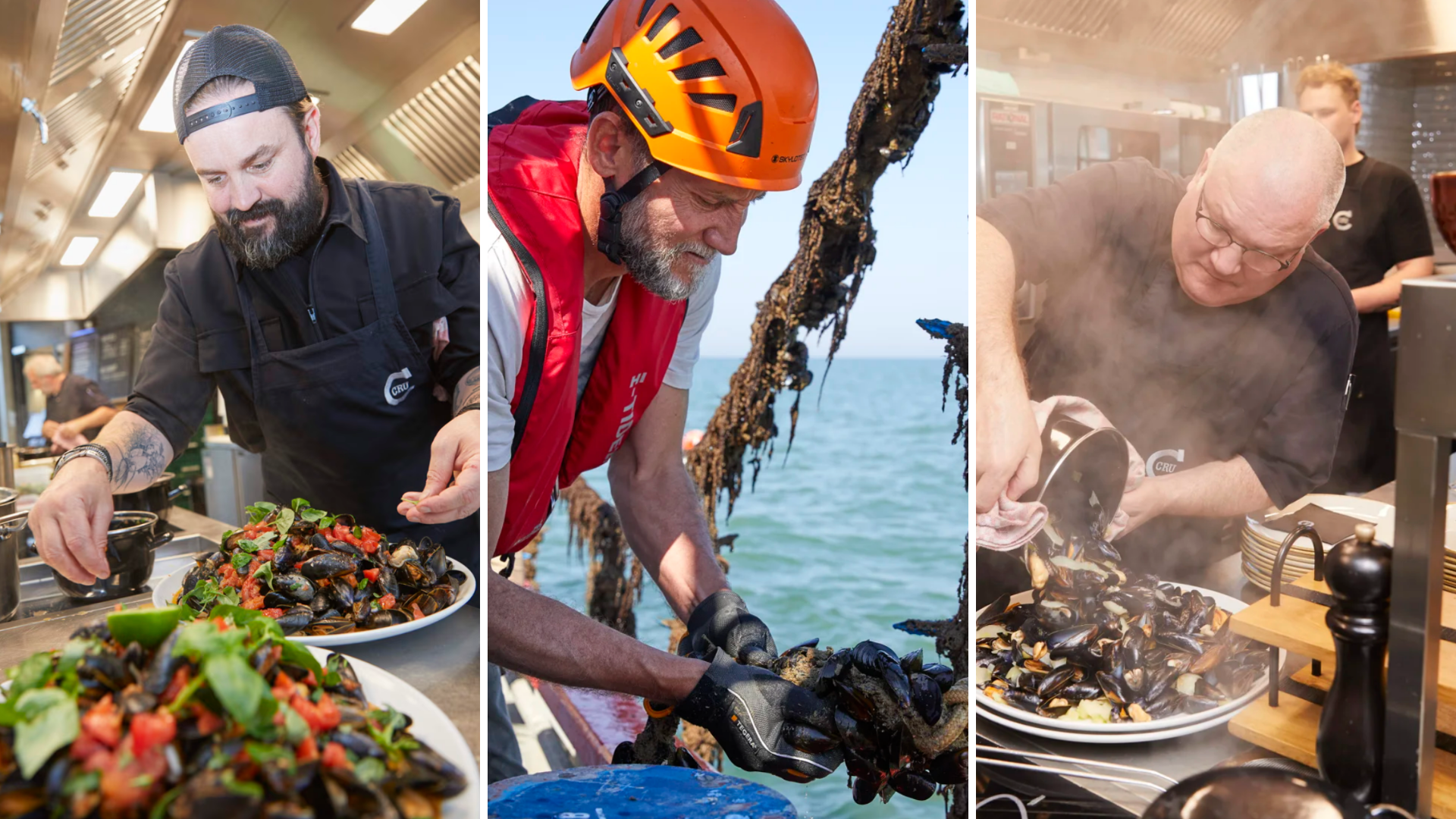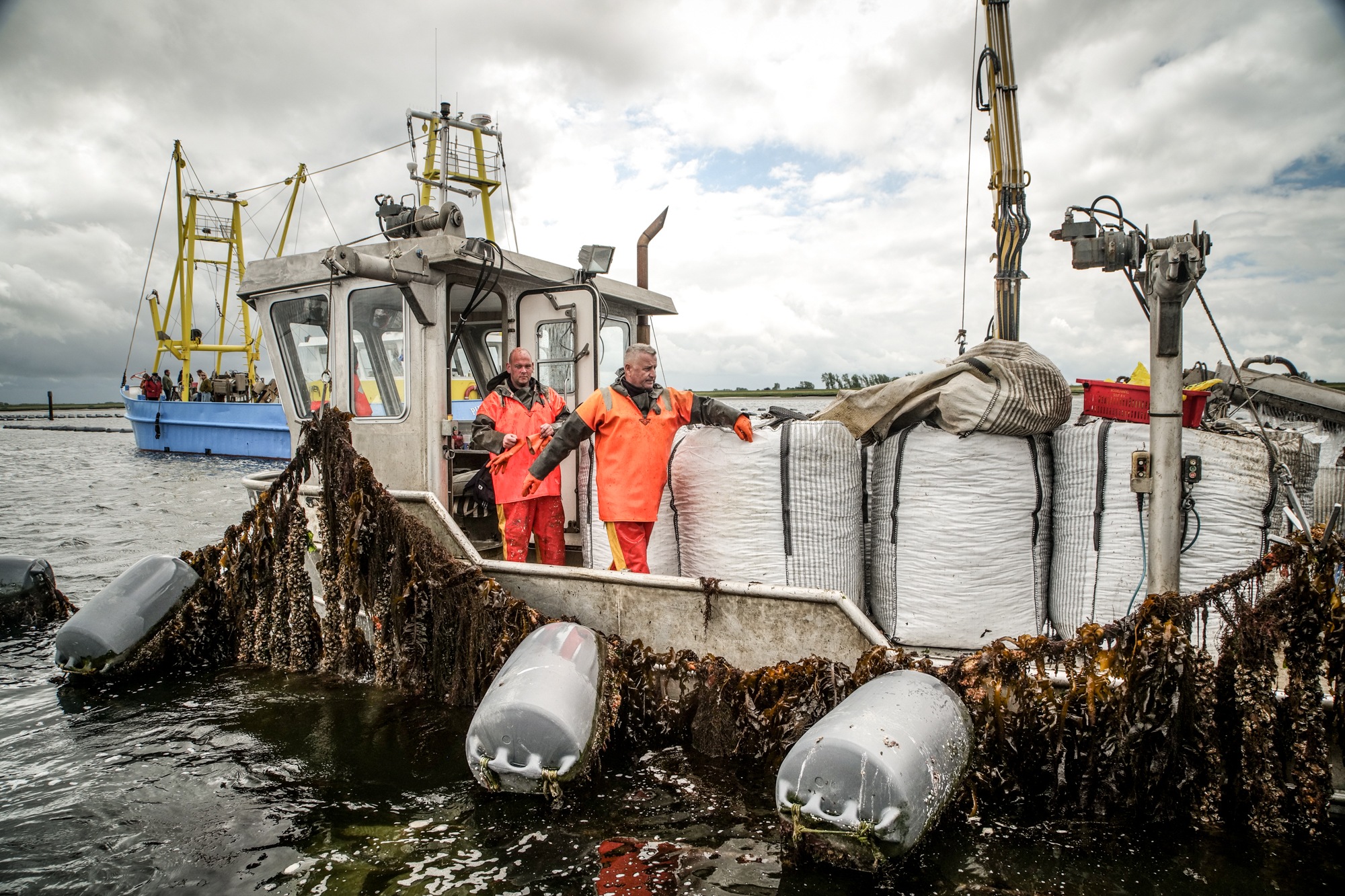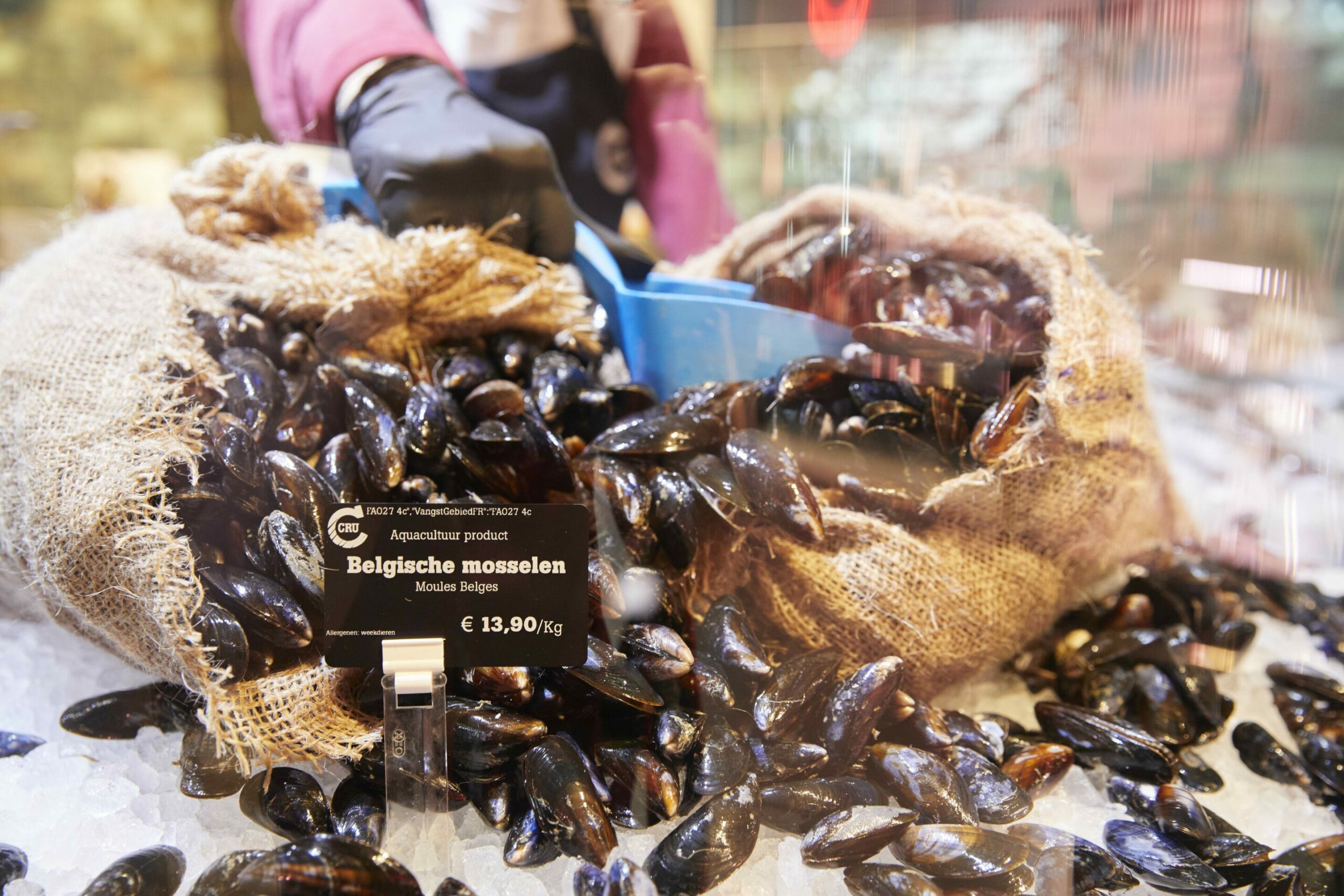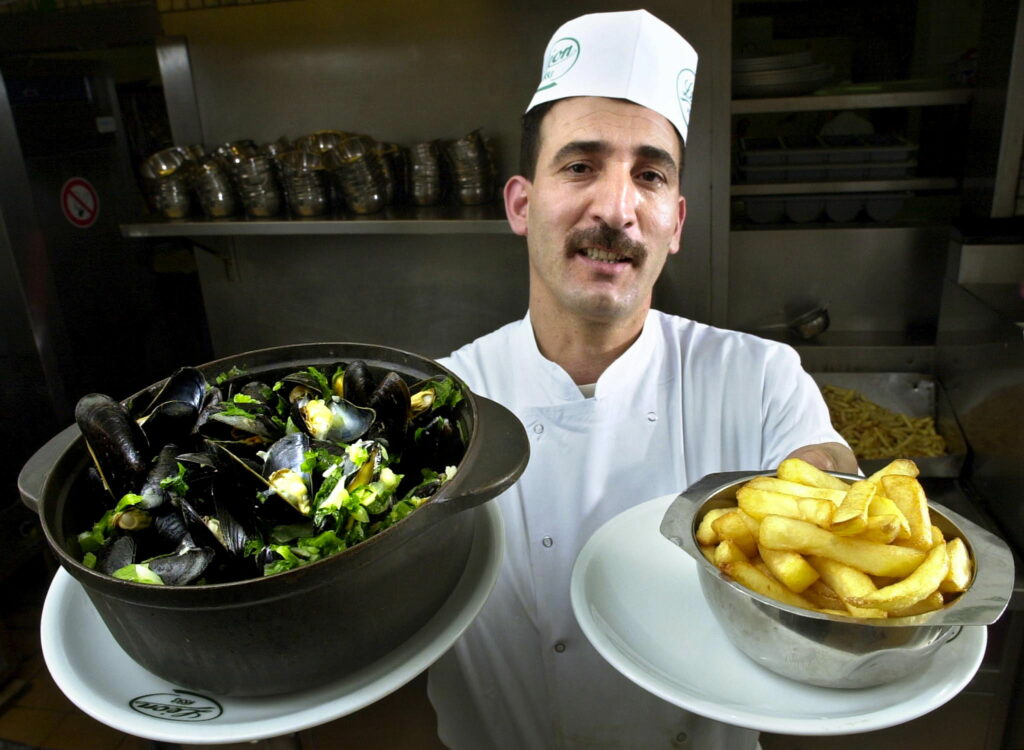For countries located on the North Sea, mussels are an established delicacy beloved by locals and revered by tourists.
Fun is often poked at Belgium’s national cuisine, which seems to revolve around potatoes and confectionery. But moules frites is an enduring crowd-pleaser that commands a superior price tag – €30 or more in restaurants is standard. The briny fruits de mer are typically cooked with onions, butter, and white wine for a mouth-watering salty combo. Washed down with a glass of blond, what could be more Belgian?
As it happens, several countries stake a claim to bringing mussels to international attention. Most notably, France also reserves a special place on bistro menus for the dish, though Flemish manuscripts from 1781 attribute the pairing with fried potatoes to farmers in the area, who were the first in Europe to cultivate potatoes after they were brought over from the Americas in the 16th century. The mussels themselves were in plentiful supply on the coast and were often used as a replacement for fish in winter months.
Moules frites is widely reported as being first served at the Liège fair around 1875. It was soon popularised across the country, with establishments such as Chez Léon making it a signature dish strongly associated with Belgium.

From briney to bistro, diners can now enjoy a fully-Belgian mussels feast. Credit: Colruyt
Some surprise then that Belgian bivalves – the mussels from Brussels – are almost entirely fished from foreign waters. 92% of the fleshy delicacy is imported from the Netherlands, where mussels have been harvested in the coastal area of Zeeland, just over the border from Belgium, for 150 years.
Yet despite depending on imports, the appetite for mussels is indisputable: around 10 million kg are consumed in Belgium every year, according to figures from the 2024 report by the Flemish Fisheries Agency. Per capita consumption in the region, this works out at an estimated 2.5kg each year – well above the European average. The total market value of mussels sold in Belgium is between €85 and €90 million, according to European Market Observatory for fisheries and aquaculture products (EUMOFA).
Three in four Flemish households cook mussels, on average seven times each year. Whilst data for the other Belgian regions is not recorded, the national taste for mussels is in evidence in supermarkets where prices are competitive. Delhaize, the biggest player accounting for 22% of the Belgian market, has prices from €6.99 for two kilos. One kilo of cooked mussels typically gives 280–300 grams of meat.
Make Belgian mussels great again
Only Colruyt (arguably the most Belgian of supermarkets) has invested in domestic production with a small-scale farm anchored in the Belgian North Sea.
Although it accounts for just a fraction of national consumption, the sea farm aims to scale up. From six tonnes produced in the first harvest in 2023, Colruyt expects 50 tonnes in 2024 – a decisive step towards a fully Belgian supply chain.
The supermarket has observed a growing demand for locally produced mussels, Colruyt spokesperson Silja Decock told The Brussels Times. She highlights the advantages of Belgian production: not only is it financially viable but the growing process also benefits the marine ecosystem. In addition, the farmers monitor sea conditions closely, tracking water temperature, salinity, and the presence of algae – all of which are indicators of the state of the ocean.
As such, a healthy mussel industry could help Belgium understand its changing marine climate better. Decock also points out that mussels produce “significantly less CO2 than other animal protein sources”, making them a more sustainable option that Colruyt believes is worth the investment.

The mussel season kicked off in Bruinisse, the Netherlands on Wednesday 29 May 2024. Credit: Belga
Manager of the marine farm Stijn Van Hoestenberghe praised the positive attributes of mussels. “It is a natural product that depends entirely on nutrients in the North Sea,” he told La Dernière Heure in June. “They remove excessive plankton and stock CO2 in their shells.”
However, since the shells cannot be eaten and account for about 70% of the total weight, the residual waste is a consideration. In Belgium the molluscs are sold with the shells, making it difficult to usefully collect and process this waste. But in Galicia (northern Spain), mussels are shelled to be sold in cans or jars. This produces some 25 tonnes of shells each year and applications in road construction, building insulation, and farming are being tested.
The industry across Europe
In terms of sustainability, mussel farmers are increasingly cultivating their crop on hanging nets rather than wild beds. This has the added advantage of making them easier to harvest, faster to grow, and fatter than those that grow on the sea bed.
Marine biologist Jacob Capelle highlights the suitability of the nutrient-rich North Sea water, which contributes to the good growth of the mussels. But whether Belgium will expand production and possibly export the seafood is unclear.
In Europe, Spain is the established leader in mussel production, with over 200 million kilos sold each year. France and Italy produce around 65 million kilos each and overall EU production has fluctuated widely between 400 and 500 million kg per year over the past 10 years.

At present, Colruyt is the only Belgian producer of mussels. Credit: Colruyt
Thanks to Silja Decock of Colruyt and Maarten du Bois of Visgro, who provided information on the mussel industry in Belgium.

